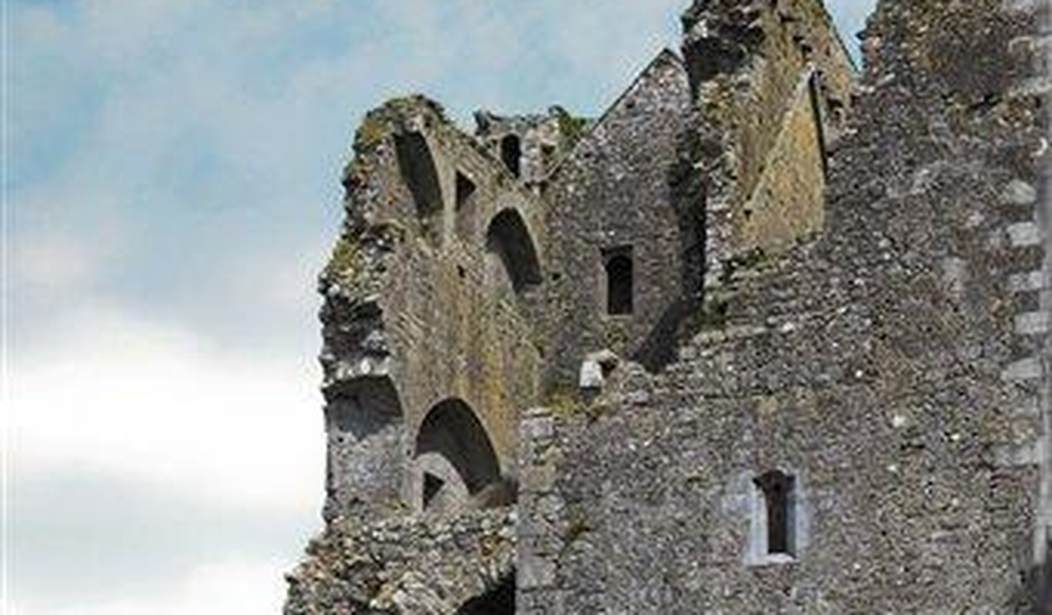Besides the familiar figure of a bishop clutching shamrock and crozier, how well do you know the man behind the dyed beer, rowdy parades, and wearin’ of the green? Here are seven things that may surprise you about Saint Patrick (ad 387–460).
We don’t know his name. When the pope authorized Patrick to evangelize Ireland, he prophetically named him Patricius, or “father of his people.” But a few guesses notwithstanding, nobody knows for sure what he was called before then.
He was well traveled. Born in Roman Britain, Patrick was abducted by Irish pirates as a youth and sold into slavery to a chieftain near Antrim, Ireland. Patrick labored as a shepherd for six years, until he was admonished by an angel to escape. He would come back to Erin twenty-four years later after having visions of Irish children pleading for him to preach them the Gospel. But before that, Patrick traveled from one end of the Continent to the other. In fact, his biography reads like a Forrest Gump tale (minus the mental disability), with the saint repeatedly encountering the who’s who of contemporary Christian Europe. He studied with St. Martin of Tours, prayed in the famous island monastery of Lérins in the south of France, was ordained a priest by St. Germanus of Auxerre, was consecrated a bishop by St. Maximus of Turin, and was given his commission to convert the Irish by Pope St. Celestine I. Celestine gave him the job, by the way, because the first missionary to Ireland had fled in terror.
Recommended
He had a hard life. One St. Patrick’s Day, my wife and I decided to read the holy bishop’s autobiography, expecting sentimental stories of shamrocks pointing to the Trinity and of snakes grateful to leave dank bogs for warmer climes. We were in for a shock. When he returned to Ireland, Patrick did not have it easy. The Irish were notoriously difficult to reason with; at least a dozen times, local chieftains and Druids had Patrick and his companions beaten, robbed, and enchained. Even after his ultimate triumph over paganism, Patrick ended his days counting his losses and bitterly responding to his critics, who apparently were legion. Patrick’s autobiography, incidentally, takes its name from St. Augustine of Hippo’s famous Confessions, but going from Augustine’s Latin to Patrick’s is like shifting from a sporty Maserati to an old Ford Tempo.
He will be around on doomsday. After fasting and praying on a mountain, Patrick was given divine assurances that just as the original apostles will be judges of the twelve tribes of Israel (Matthew 19:28), he will be appointed judge of the entire Irish race at the end of time (drunken Micks the world over, beware). What is more, seven years before Judgment Day, the sea will cover Ireland to save its people from the tribulations of the Antichrist. When climate change submerges the Emerald Isle, start the clock.
He is the patron saint of Nigeria. Have you seen the T-shirts with a shamrock that say, “Kiss Me I’m Nigerian”? St. Patrick patronizes Nigeria thanks to the Irish missionaries who brought the Catholic faith to that African country in the nineteenth century. It is also the reason why, after the United Kingdom and the Republic of Ireland, Nigeria consumes more Guinness than any other nation, beating out fourth-ranked U.S.A.
He should be the patron saint of surfers and water-skiers. There are a host of colorful stories about the saint. According to one, Patrick was transporting a large altar stone from the Continent to Ireland when the captain denied passage to a leper. Patrick threw the stone into the sea, commanded it to float, and instructed the leper to sit on it. Leper and stone then cruised safely behind the ship.
He is the inspiration of a toast. Although historians believe that whiskey was developed by Irish monks in the twelfth century, there is a legend that Patrick used this “water of life” (the meaning of the Gaelic uisce beathe or “whiskey”) to teach a lesson in Christian virtue. During one of his missions, Patrick came across an innkeeper who gave him a glass of whiskey that was far from full. Patrick told the man that a devil was living in his cellar and causing him to be stingy, and that the only way the man could banish the fiend was by filling each glass to its brim. When Patrick returned later and saw that each cup was full, he proclaimed the devil duly exorcised. This story is honored on St. Patrick’s Day with the custom of Pota Pádraig (POTT-ah PAH-drig) or “Patrick’s Pot,” drinking a full measure of whiskey.
Michael P. Foley, Ph.D., teaches in the Great Texts Program at Baylor University and is the author of Drinking with Your Patron Saints: The Sinner’s Guide to Honoring Namesakes and Protectors (Regnery, 2020).
























Join the conversation as a VIP Member